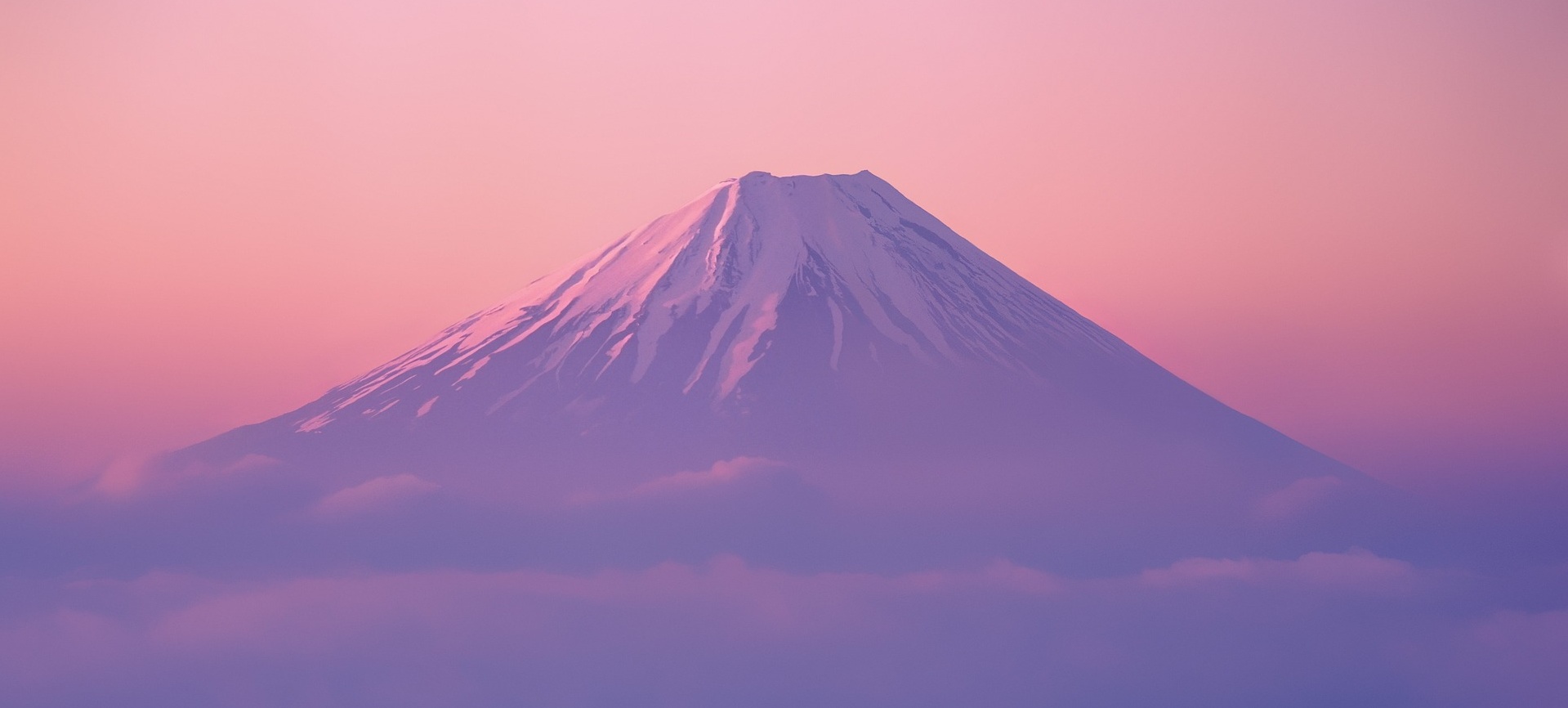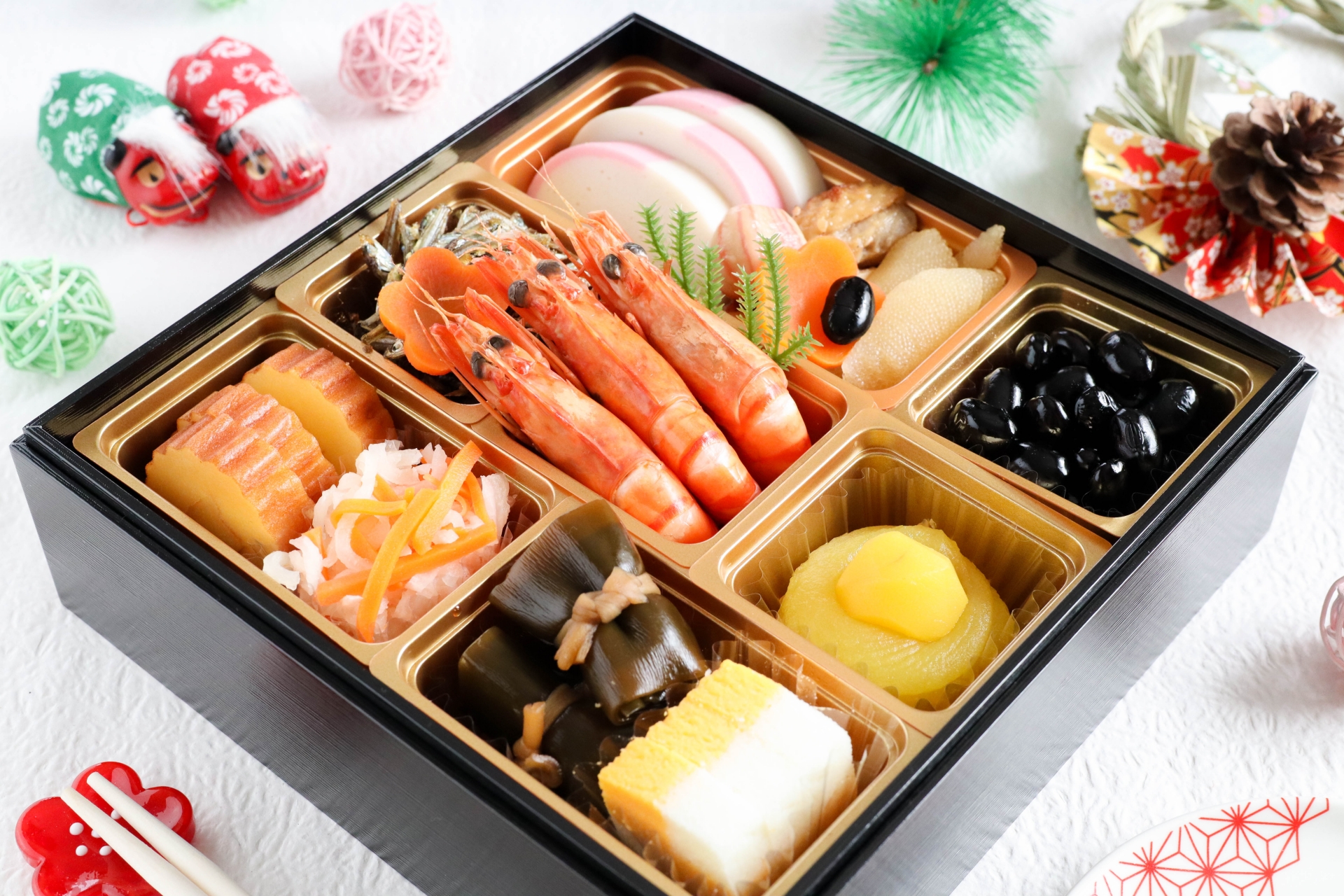もともと「正月」は、1年の最初の月のこと。その中でも特に松の内(元日から7日や15日まで:地域によって異なる)までを指します。
Originally, Shogatsu was the first month of the year. Among these, it particularly refers to Matsunouchi (from New Year’s Day to the 7th or 15th: varies by region).
新たな年の神さま(年神さま)を家に迎え、家族揃って「お屠蘇(とそ)」「お雑煮(ぞうに)」「お節料理」で新年をお祝いします。
Welcoming the new year’s god (toshigami) into our homes, we celebrate the new year with the whole family with “toso,” “zouni,” and “Osechi ryori.’’
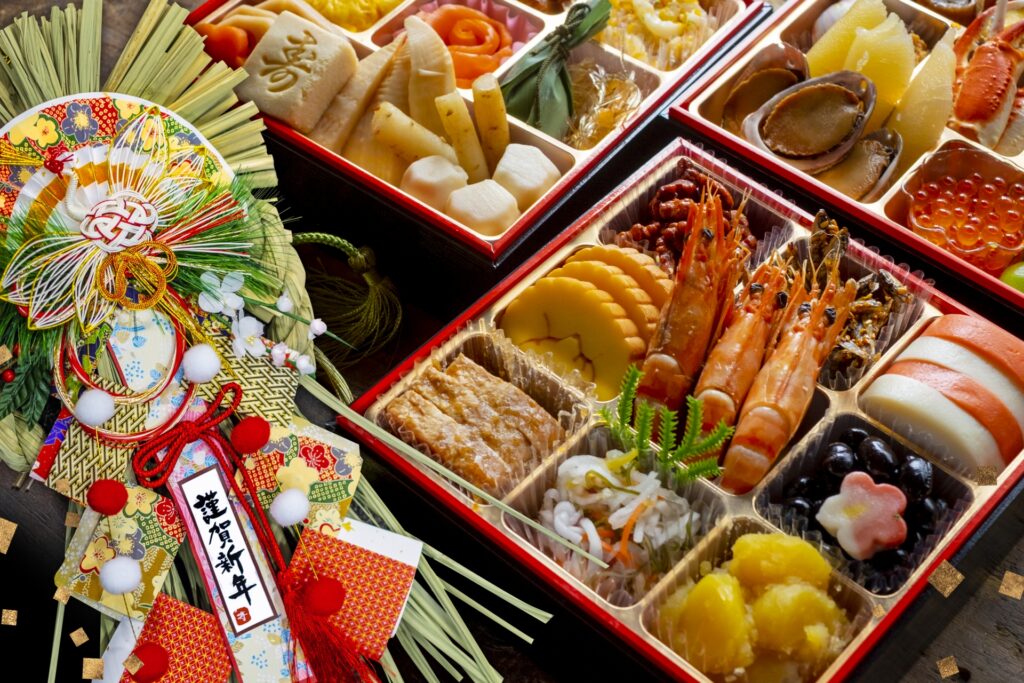
ハレ*の料理の代表でもある、正月料理。新年を祝い、家族の健康や子孫繁栄の願いが込められています。また、地域やそれぞれの家庭で特色・習慣があります。
New Year’s cuisine is a typical Hare* cuisine. It celebrates the new year and includes wishes for the health of the family and the prosperity of descendants. Also, each region and each family has its own characteristics and customs.
・餅(もち)/Mochi (Rice Cake)
・お節(せち)/Osechi (New Year Dishes)
・お雑煮(ぞうに)/Ozouni (Zouni Soup)
・お屠蘇(とそ)/Otoso (New Year’s spiced Sake)
お節・お雑煮・お屠蘇の「お」は、それぞれ節・雑煮・屠蘇につく丁寧語
The “o” in osechi, ozoni, and otoso is a polite word for sechi, zoni, and toso, respectively.
餅(もち)/Mochi (Rice Cake)
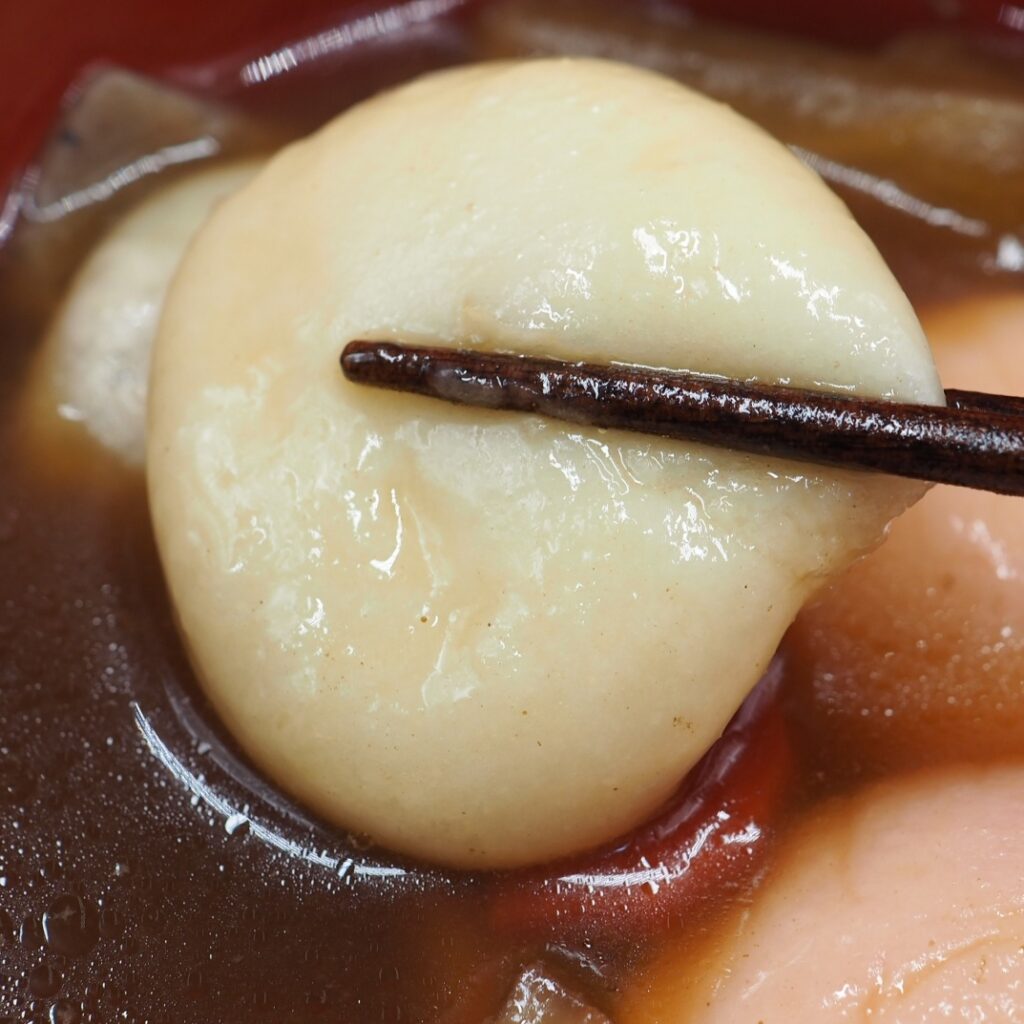
お正月に餅を食べるのは、平安時代に宮中で健康と長寿を祈願して行われた正月行事「歯固めの儀」に由来します。もともと餅は、ハレの日に神さまに捧げる神聖な食べ物でした。又、餅は長く延びて切れないことから、長寿を願う意味も含まれています。
日本鏡餅組合
年神様に供えた餅を神棚から下ろしお供え物をいただくことで、一年の無病息災を祈る気持ちが込められています。
Eating mochi on New Year’s Day originates from the New Year’s ritual “Hagatame-no-Gi,” which was held in the Imperial Court during the Heian period to pray for health and longevity. Originally, mochi was a sacred food offered to the gods on Hare’s day. Also, since mochi lasts a long time and cannot be cut, it also has the meaning of wishing for longevity.
By taking down the mochi offered to the god of the year from the altar and receiving the offering, it is a symbol of prayer for good health throughout the year.
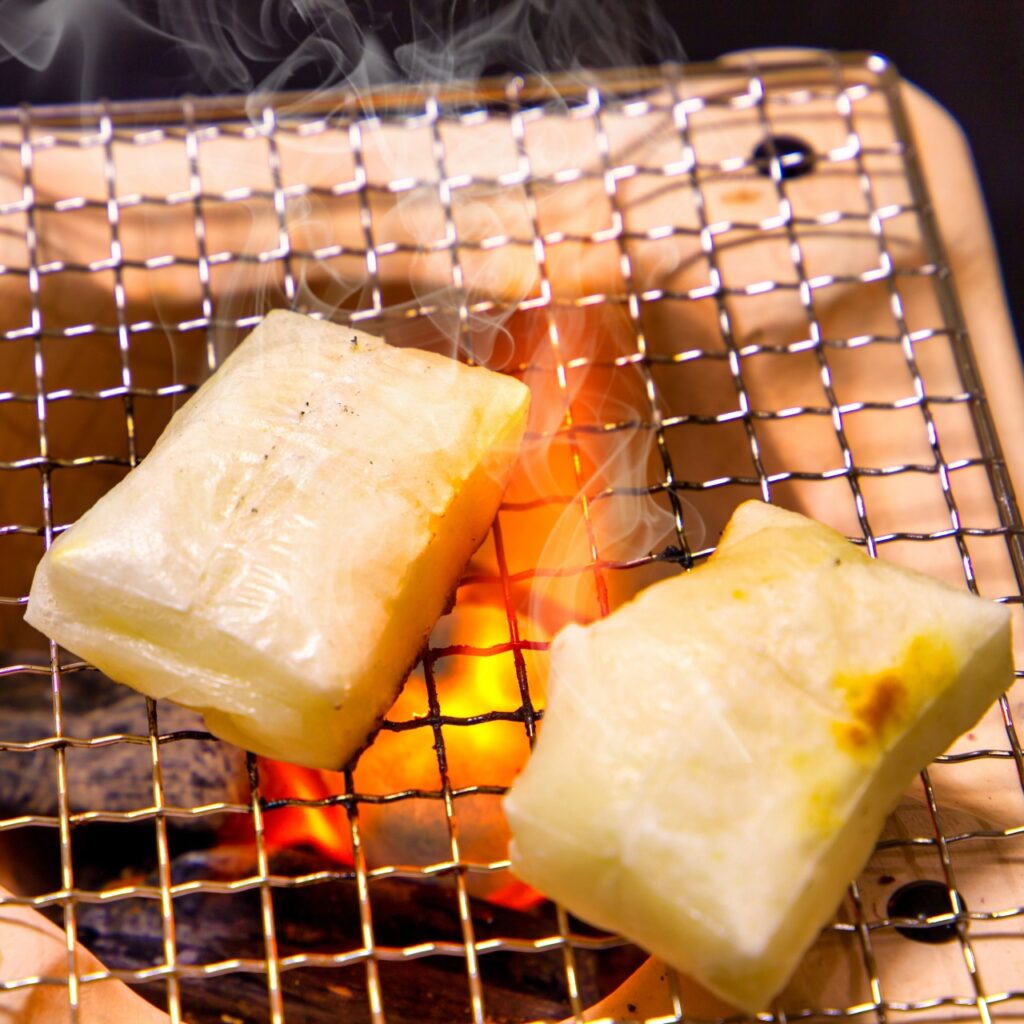
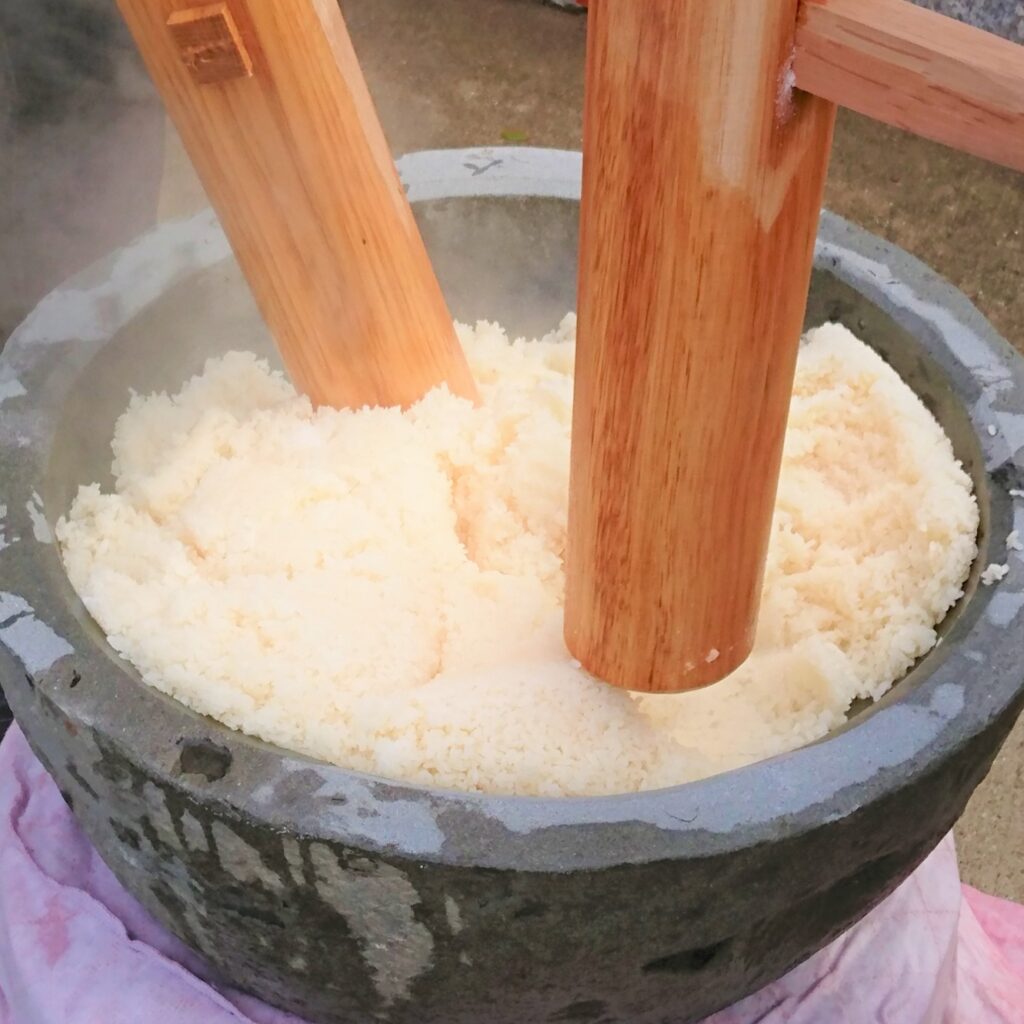
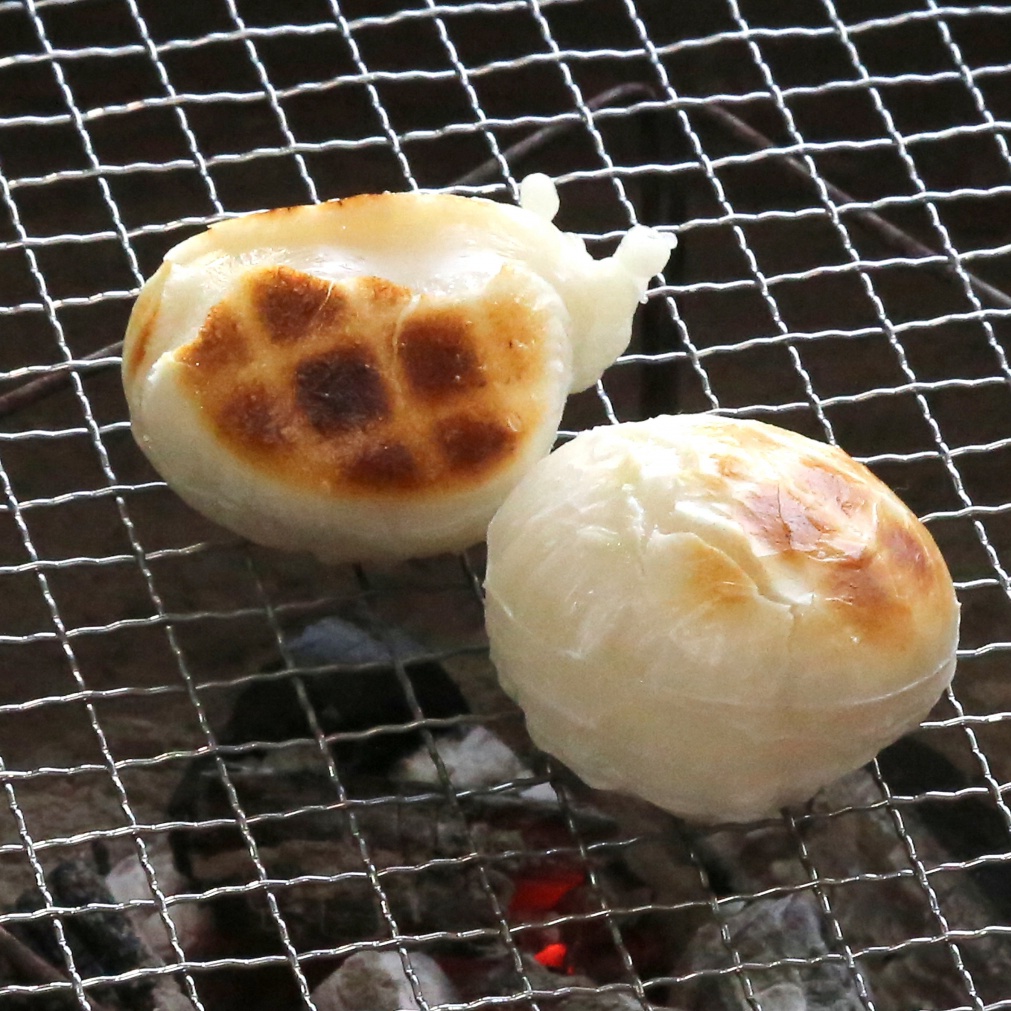
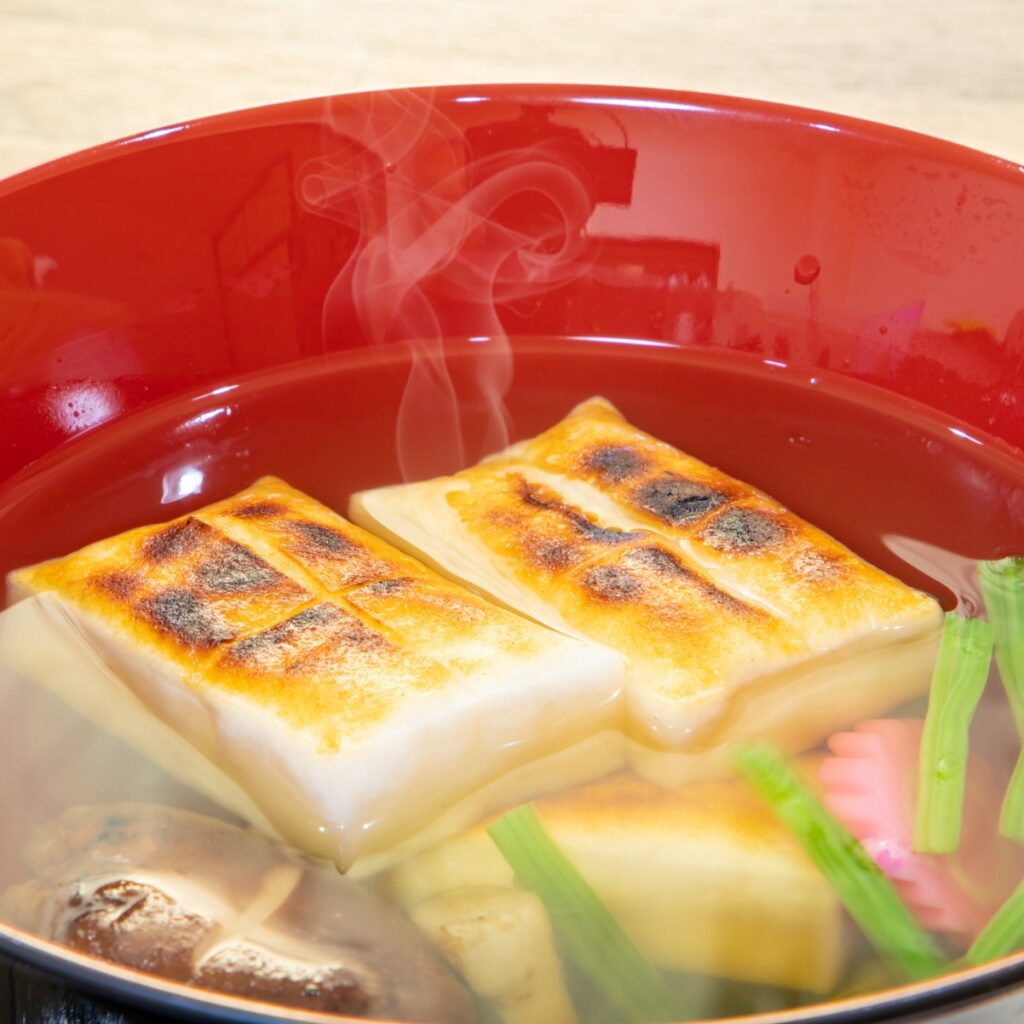
正月を前にして十二月二十九日、三十一日を除く日*に搗いたもの。餅には霊力があると信じられ、それを食べることで身に霊力がつくと考えられていた。
日本の歳時記
It is pounded on days other than the 29th and 31st days of December, just before the New Year. It was believed that mochi had spiritual power, and eating it was thought to impart spiritual power to one’s body.
29日は「く(9・九)餅」31日は「一夜餅(いちやもち)」として、縁起がよくないとされている
The 29th is “Ku (9/九) Mochi” and the 31st is “Ichiyamochi”, which are considered unlucky.
お節(せち)/Osechi (New Year Dishes)
さまざまな縁起のよい食材が、重箱に詰められています。
*それぞれの謂(いわ)れや縁起(えんぎ)には諸説あり
A variety of auspicious ingredients are packed into jubako boxes.
*There are various theories about the meaning and auspicious origin of each.
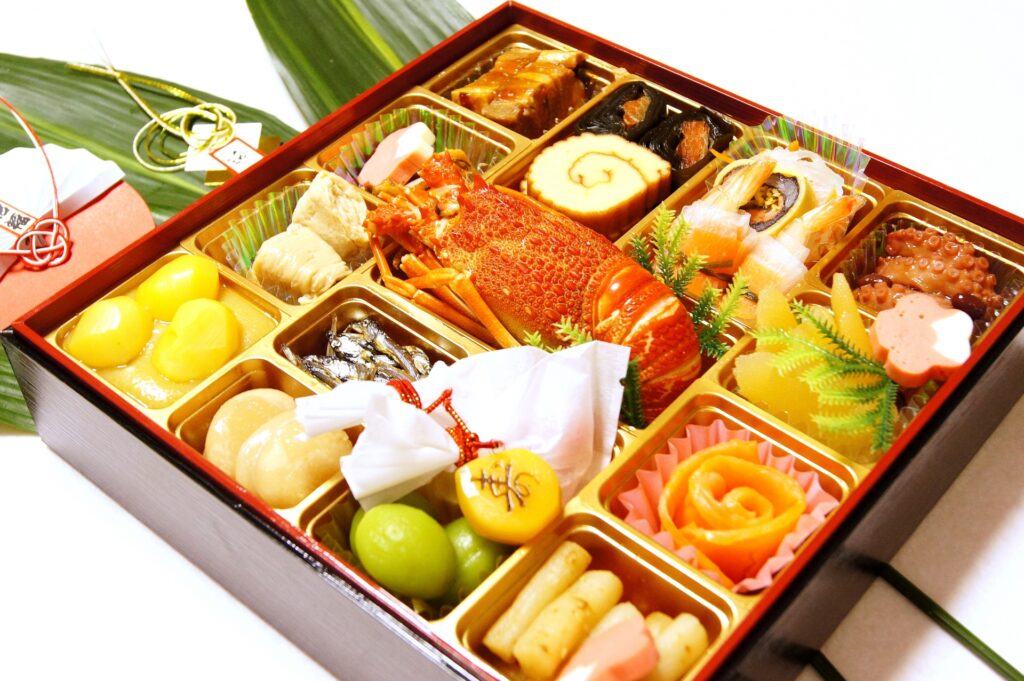
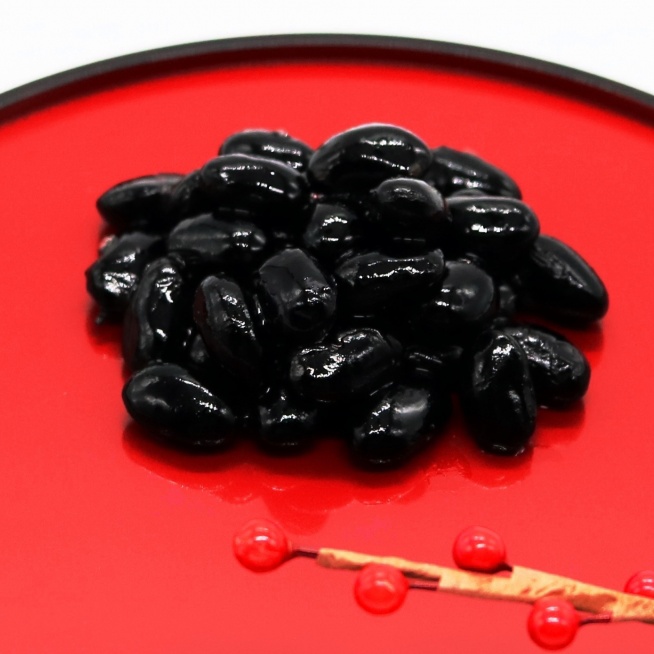
黒豆(くろまめ)/Kuromame (Sweet Black Soybeans)
まめまめしく、健康で働けるように
You can work diligently and in good health
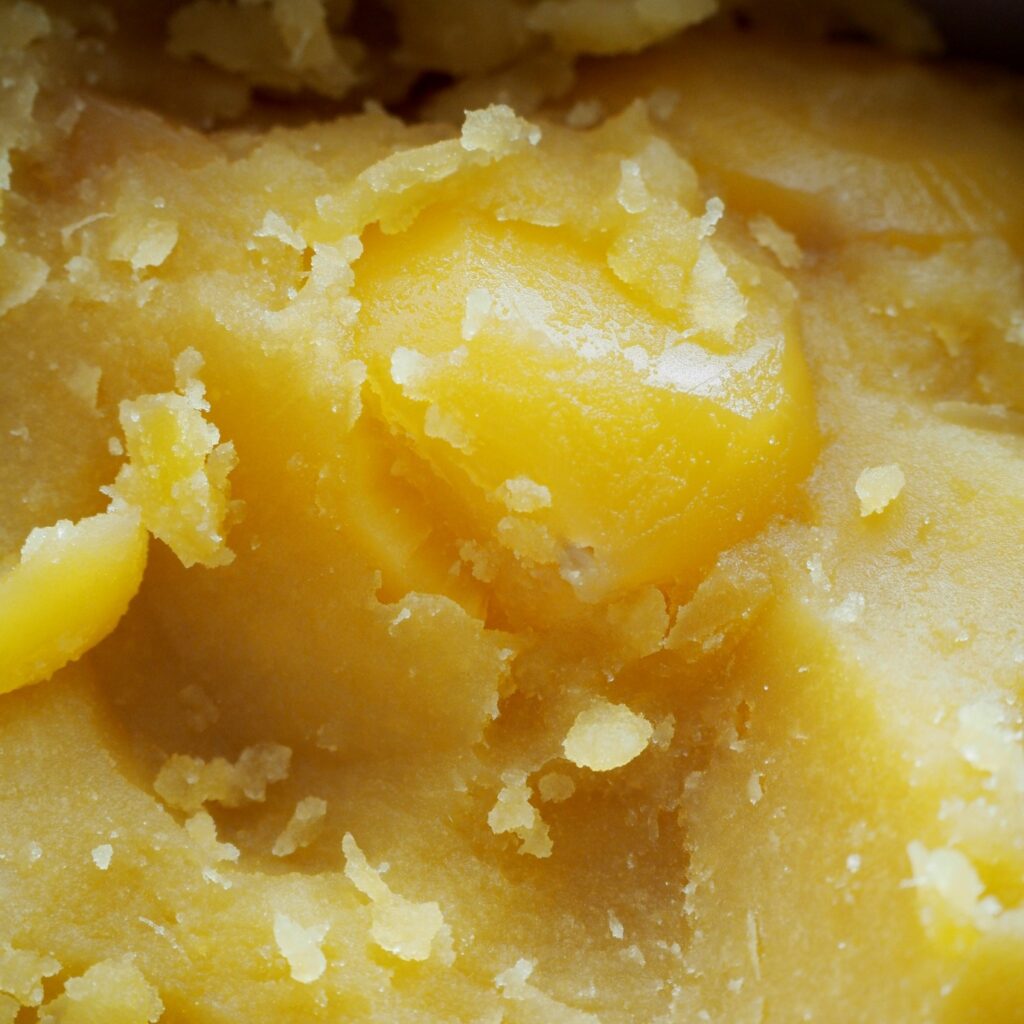
栗きんとん/Kurikinton (Candied Chestnut with Sweet Potatoes)
金運の向上を願う
Wish for improved financial luck
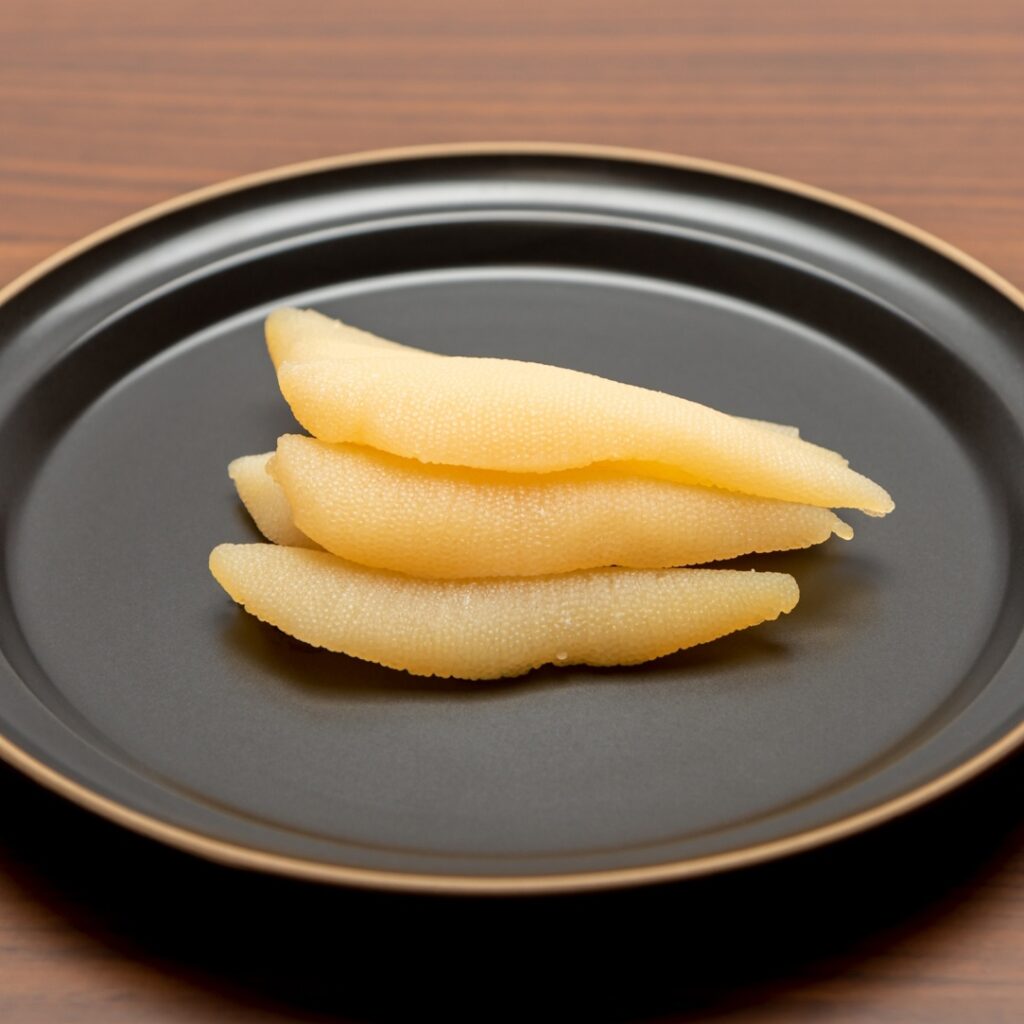
数の子(かずのこ)/Kazunoko (Salted Herring Roe)
子孫繁栄を願う
Wish for the prosperity of descendants
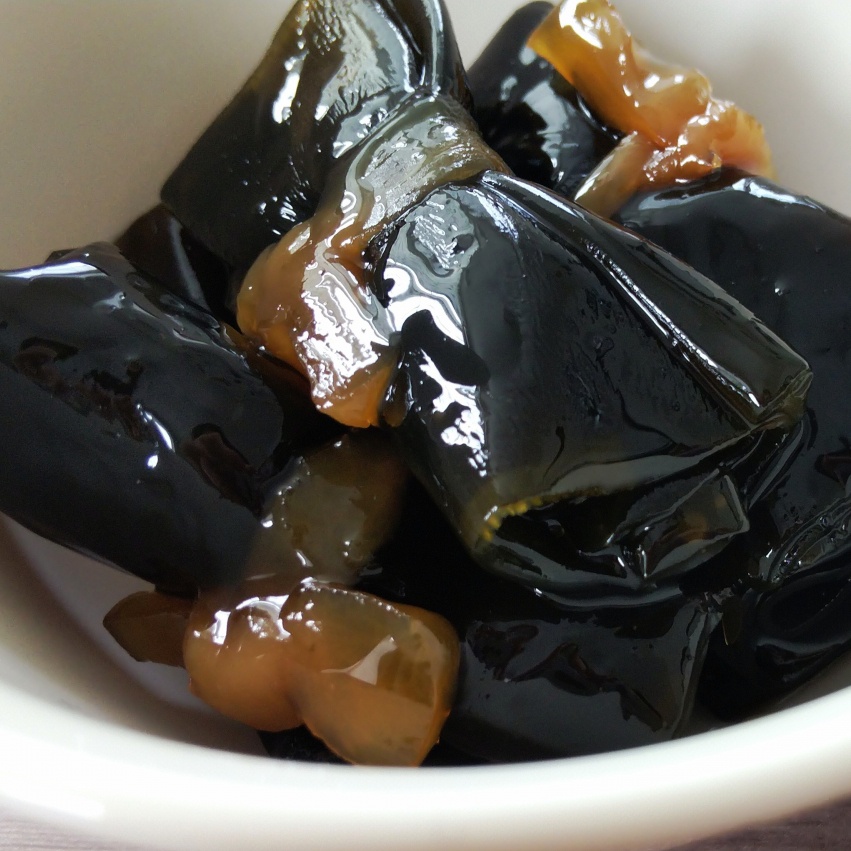
昆布巻き(こぶまき)/Kobu-Maki (Kobu Rolls)
よろ「こぶ」=喜ぶから、健康長寿・子孫繁栄を願う
Yoro “Kobu” = happy, we wish for good health, long life, and prosperity of descendants.
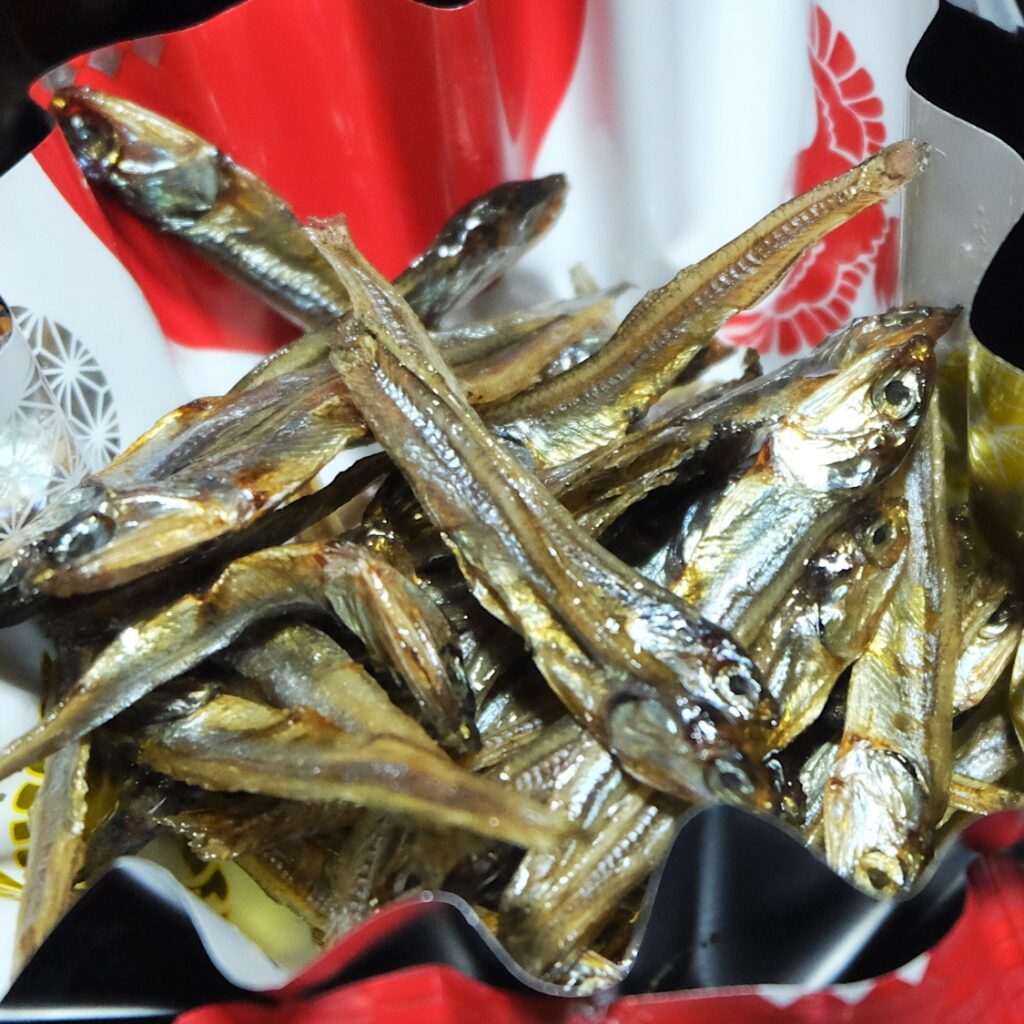
田作り(たづくり)/Tazukuri (Candied Sardines)
豊作を願う
Wish for a good harvest
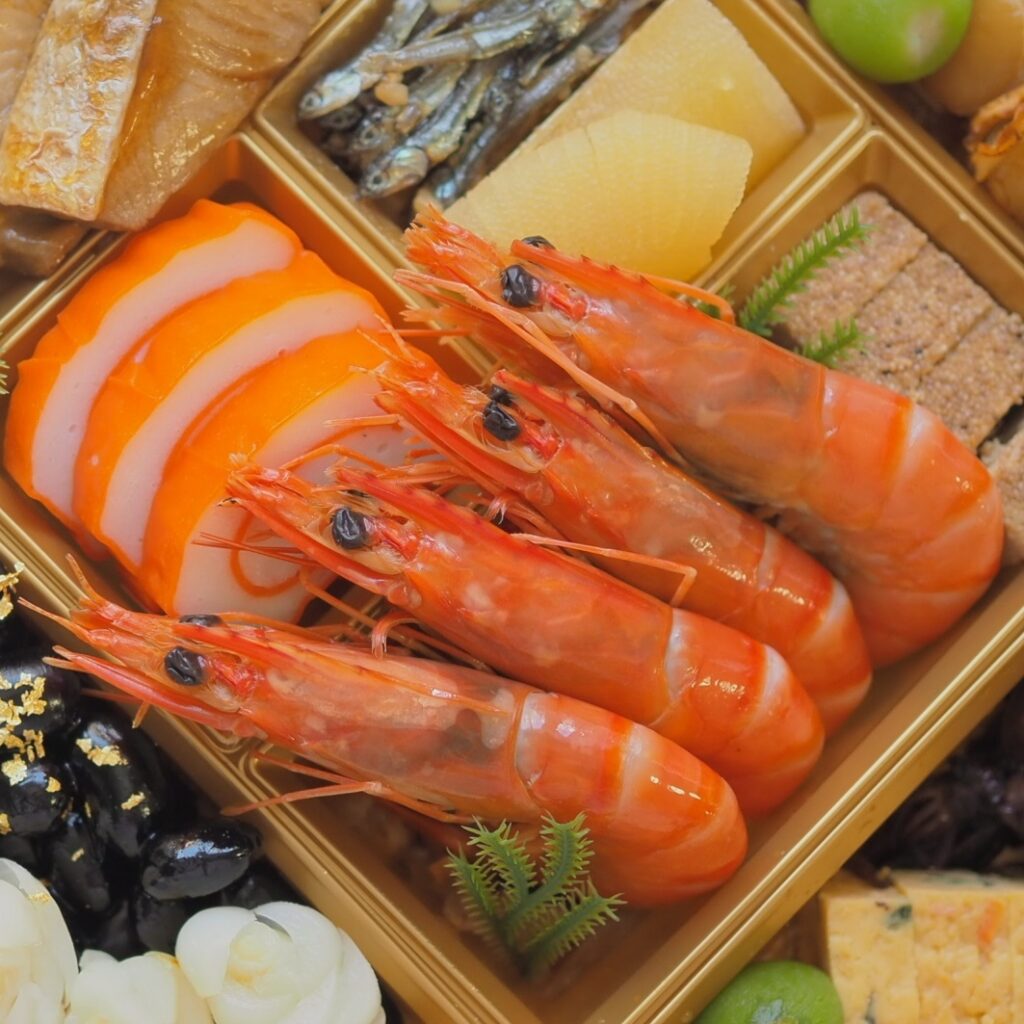
海老(えび)/Ebi (Shrimp)
曲がった姿と長いヒゲから、長寿の象徴
Symbol of longevity due to its curved appearance and long beard
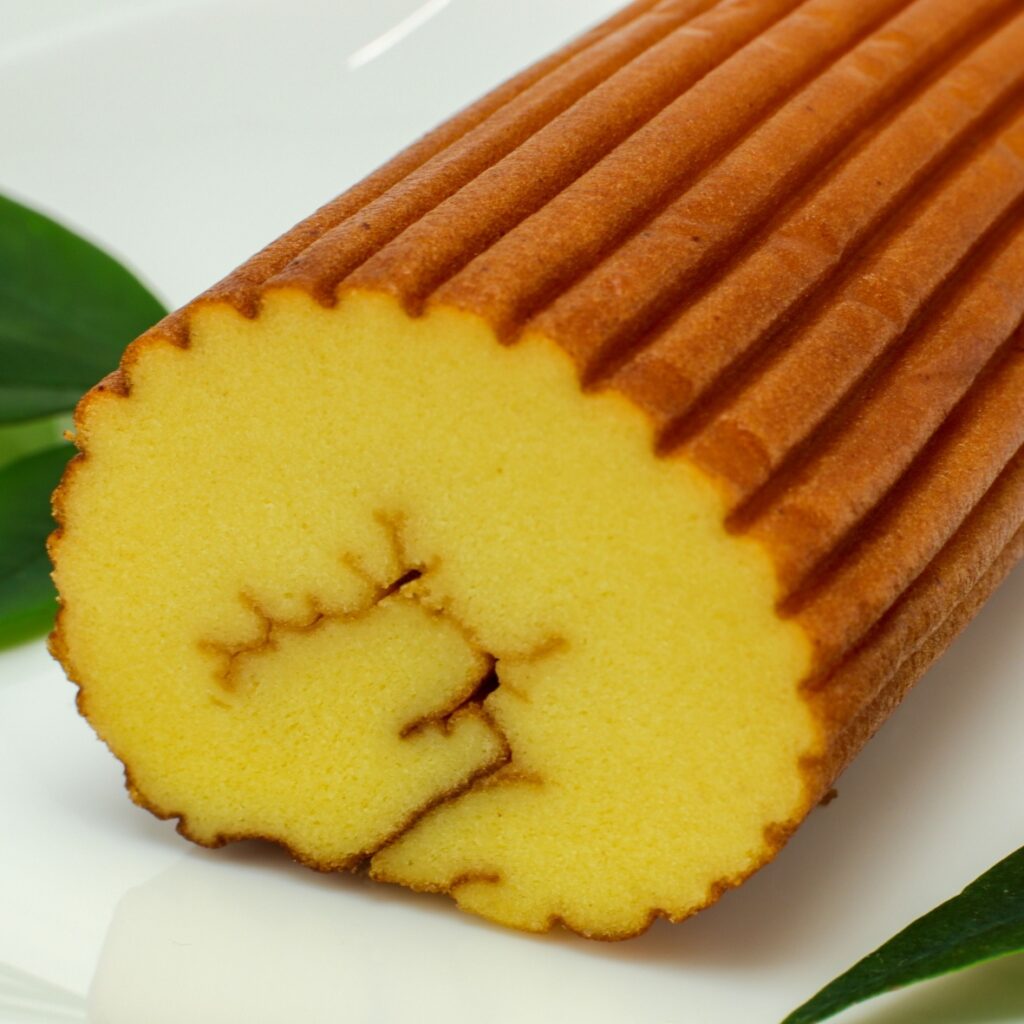
伊達巻き(だてまき)/Date-Maki (Sweet Rolled Omlet)
巻物(まきもの)=古い形の読み物、書物に似ていることから、知識向上を願う
Because of it’s scrolls shape, old-fashioned reading material or resembling books, we wish for improved knowledge.
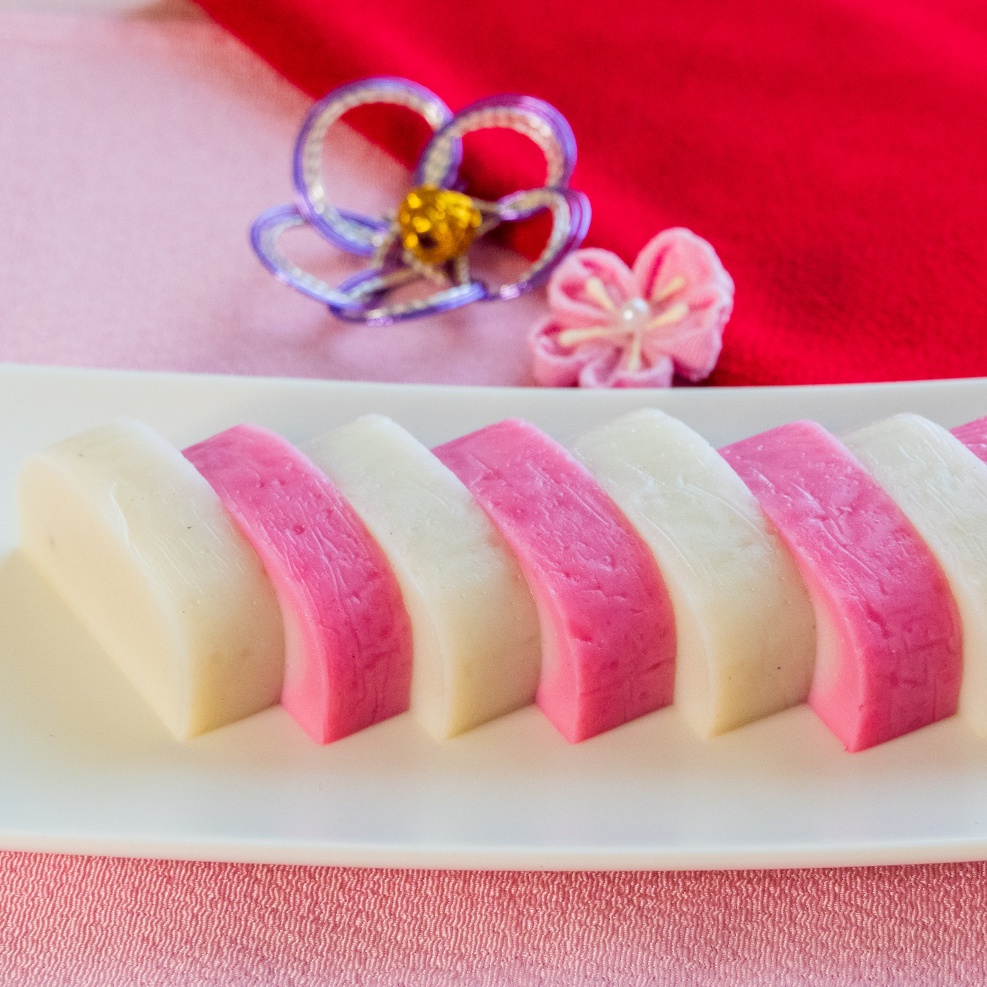
蒲鉾(かまぼこ)/Kamaboko (Fish Cake)
半月の形が、日の出を象徴している
The half-moon shape symbolizes the sunrise.
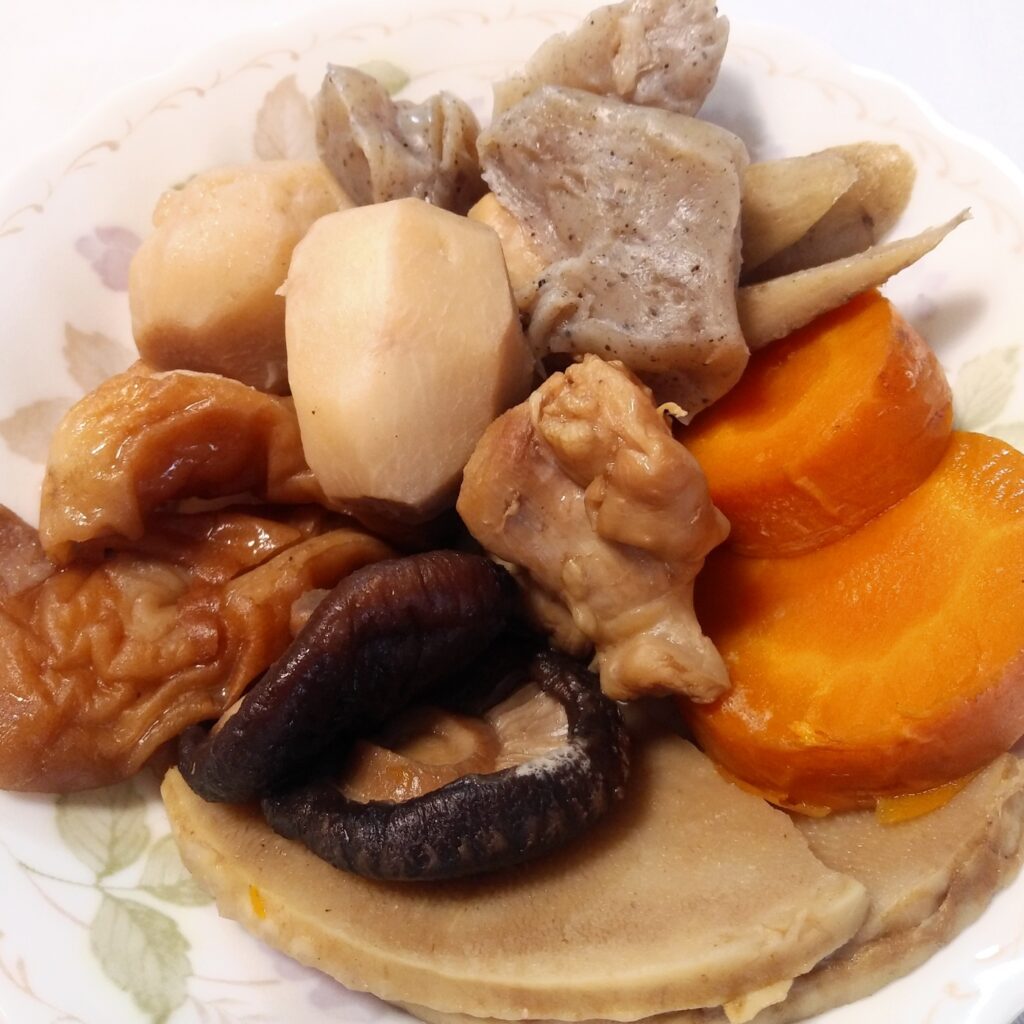
煮しめ(にしめ)/Nishime (Boiled Root Vegitables)
根菜(こんさい)から「根を生やす」つまり子孫繁栄を願う
“Grow roots” from root vegetables, that is, pray for the prosperity of descendants.
お雑煮(ぞうに)/Ozouni (Zouni Soup)
山のもの、海のものを入れ、実り豊かな年を願う
Add things from the mountains and the sea to wish for a fruitful year.
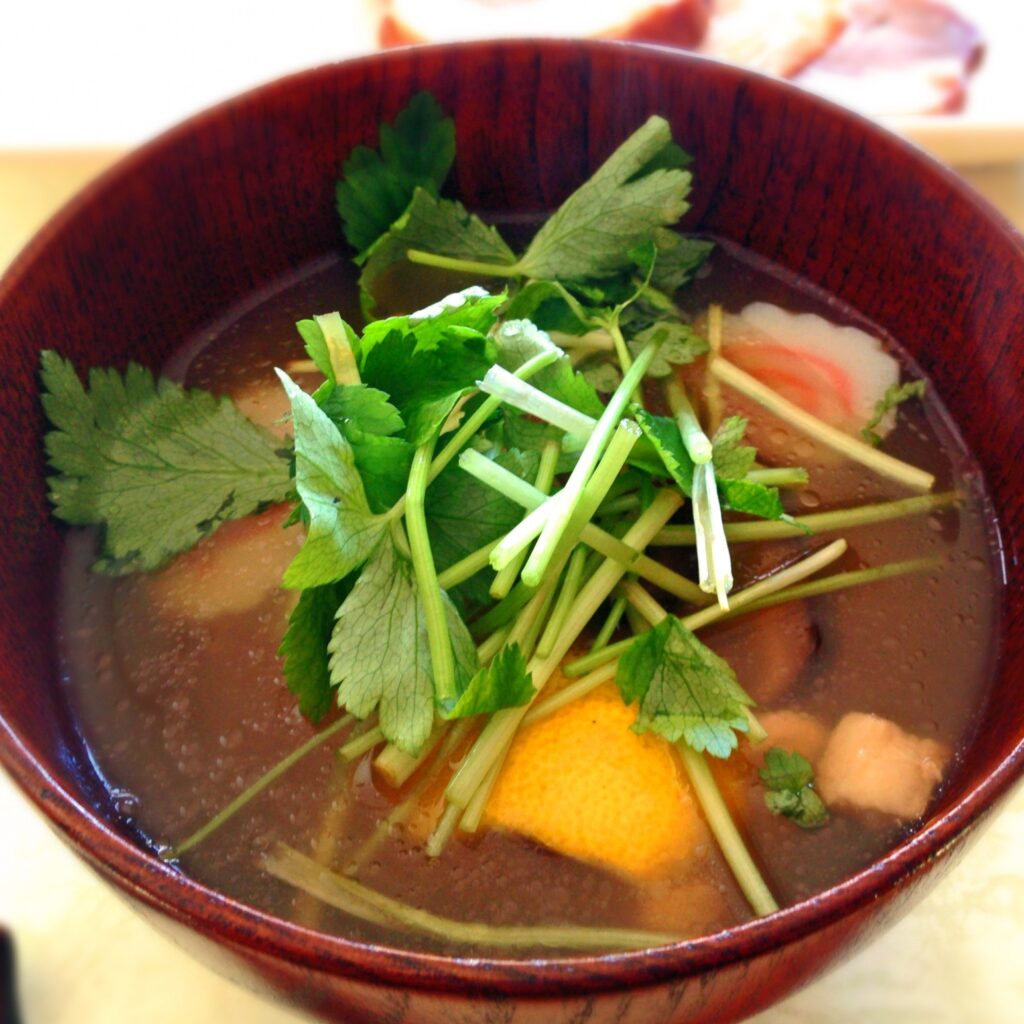
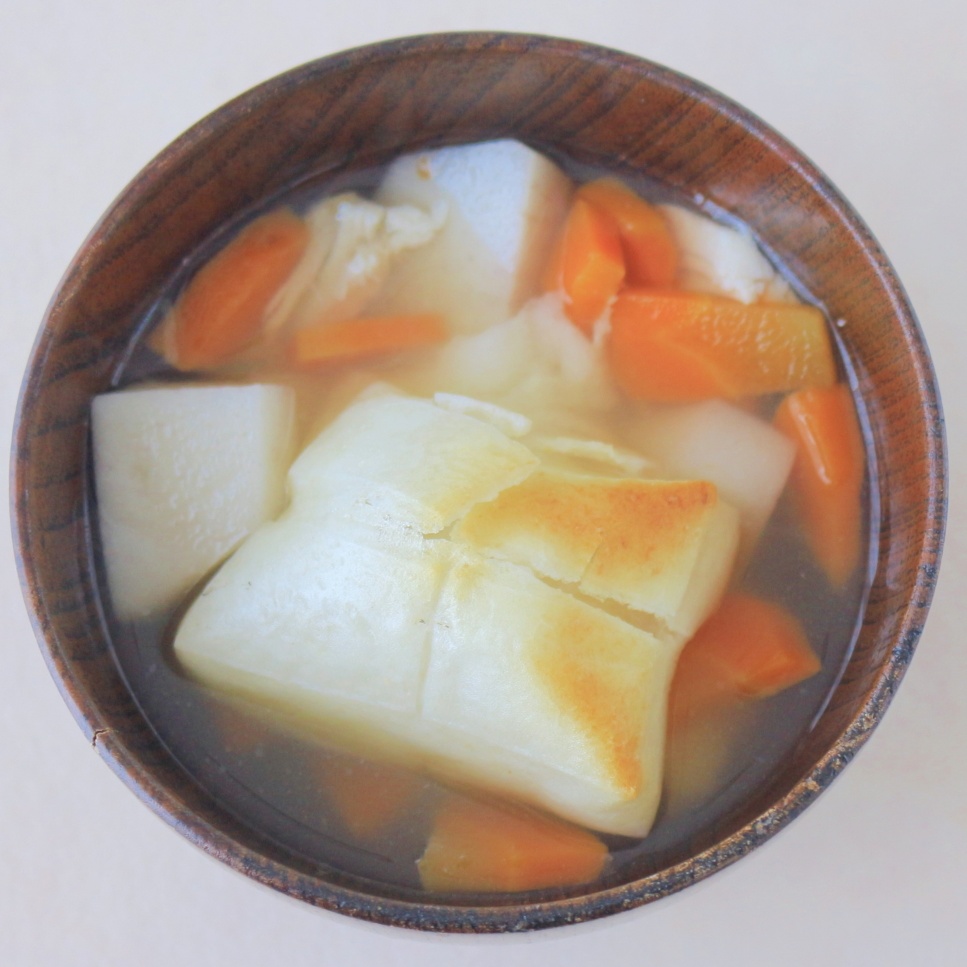
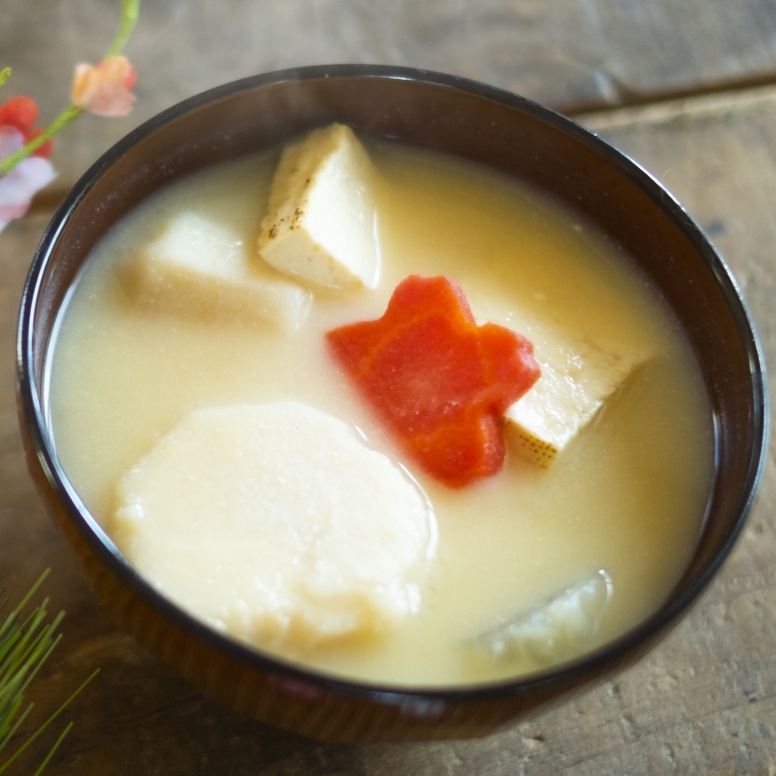
なかに入れる具材、出汁(だし)は、地域・家庭によりバリエーション豊か。また餅は、東日本が切り餅、西日本は丸餅が多いといわれる。
There are many variations in ingredients and soup stock depending on the region and family.It is also said that eastern Japan tends to have cut mochi, while western Japan tends to have round mochi.
お屠蘇(とそ)/Otoso (New Year’s spiced Sake)
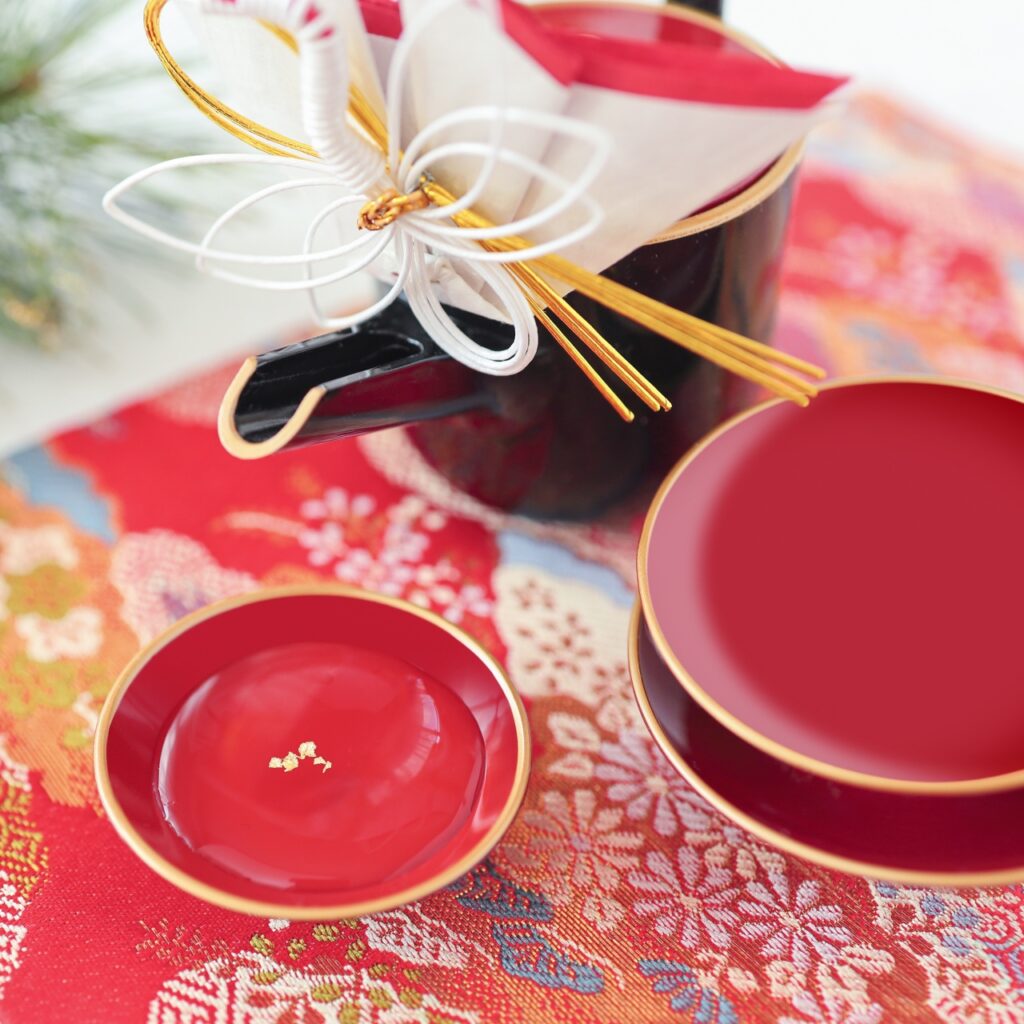
元日に飲む薬酒(やくしゅ)
屠蘇散(とそさん)を袋に入れて酒(またはみりん)に浸したもの。邪気を払い長寿をもたらしてくれると考えられている。
Yakushu to drink on New Year’s Day
A bag of tososan soaked in sake (or mirin). It is believed to ward off evil spirits and bring longevity.
*屠蘇散(とそさん)/Tososan
サンショウ、シナモン、ハマボウフウ、キキョウの根、オケラの根(蒼朮 (そうじゅつ) または白朮という)を混ぜたもので、漢方薬の一種。
日本大百科全書
It is a type of Chinese herbal medicine that is a mixture of Chinese cabbage, cinnamon, Japanese turmeric, bellflower root, and okera root (also called sojutsu or hakushu).
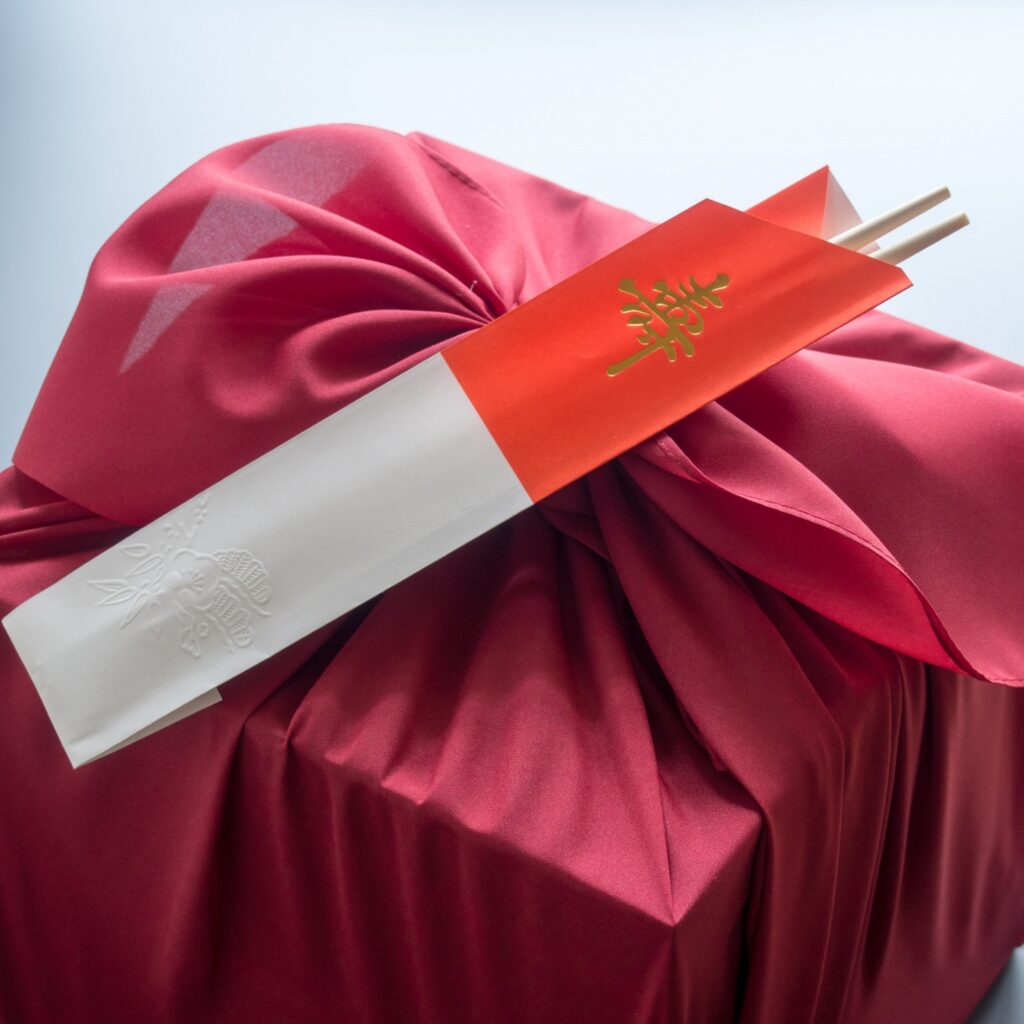
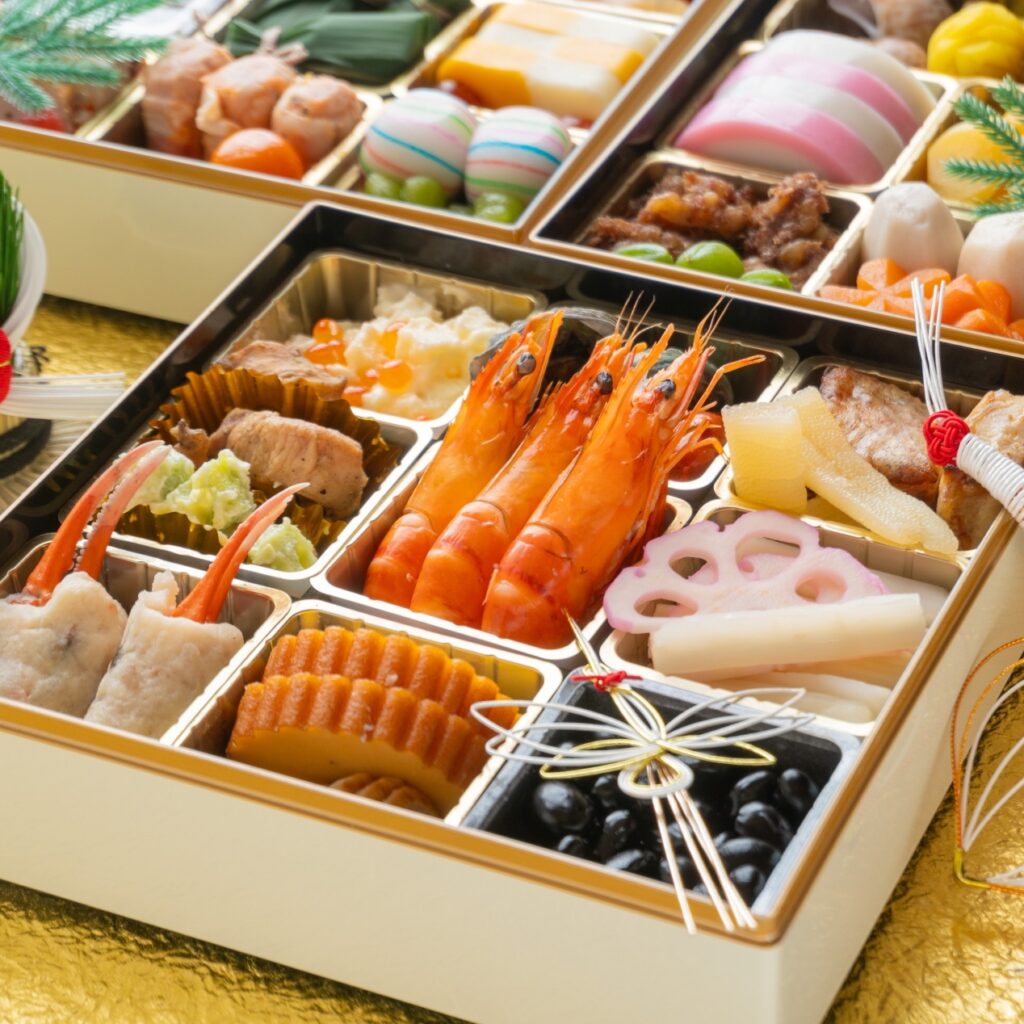
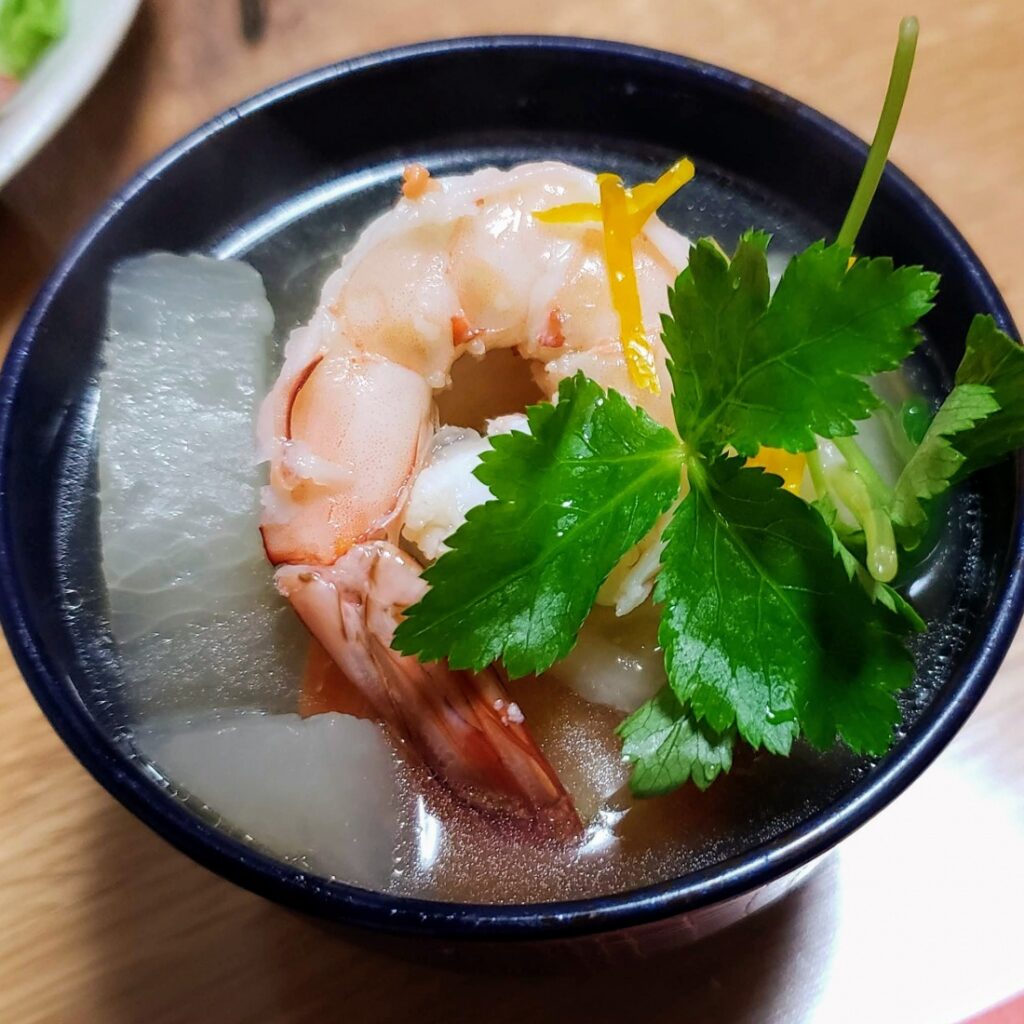
ハレとケ/Hare and Ke
ハレというのは祭礼、年中行事、人生儀礼など、改まったときのことであり、ケというのは日常、普段のときのことで、この時々によって食物・食具・食制を区別するという規範。
ハレの日の食事は、日ごろ食べない魚や肉、変わり物を食べた。米だけの飯、餅 (もち) 、団子、粢 (しとぎ) 、強飯(赤飯)などを中心にした食事で、飲酒もハレの日に限られていた。
直会 (なおらい) は神と人間との共同飲食を示すことばであり、節供 (せっく) は節日に特別な食物を神に供するという意味をもっている。
日本大百科全書
Hare refers to formal occasions such as festivals, annual events, and life rituals, while Ke refers to everyday or ordinary times, and there is a rule that distinguishes food, eating utensils, and dietary systems depending on the occasion.
For our special day meal, we ate fish, meat, and unusual foods that we don’t usually eat. Meals consisted mainly of rice, mochi, dango, shitogi, and sekihan, and drinking was limited to special occasions.
Naorai refers to eating and drinking together between gods and humans, and “Sekku” has the meaning of offering special food to the gods on festival days.
小正月(こしょうがつ)/Kosyougatsu
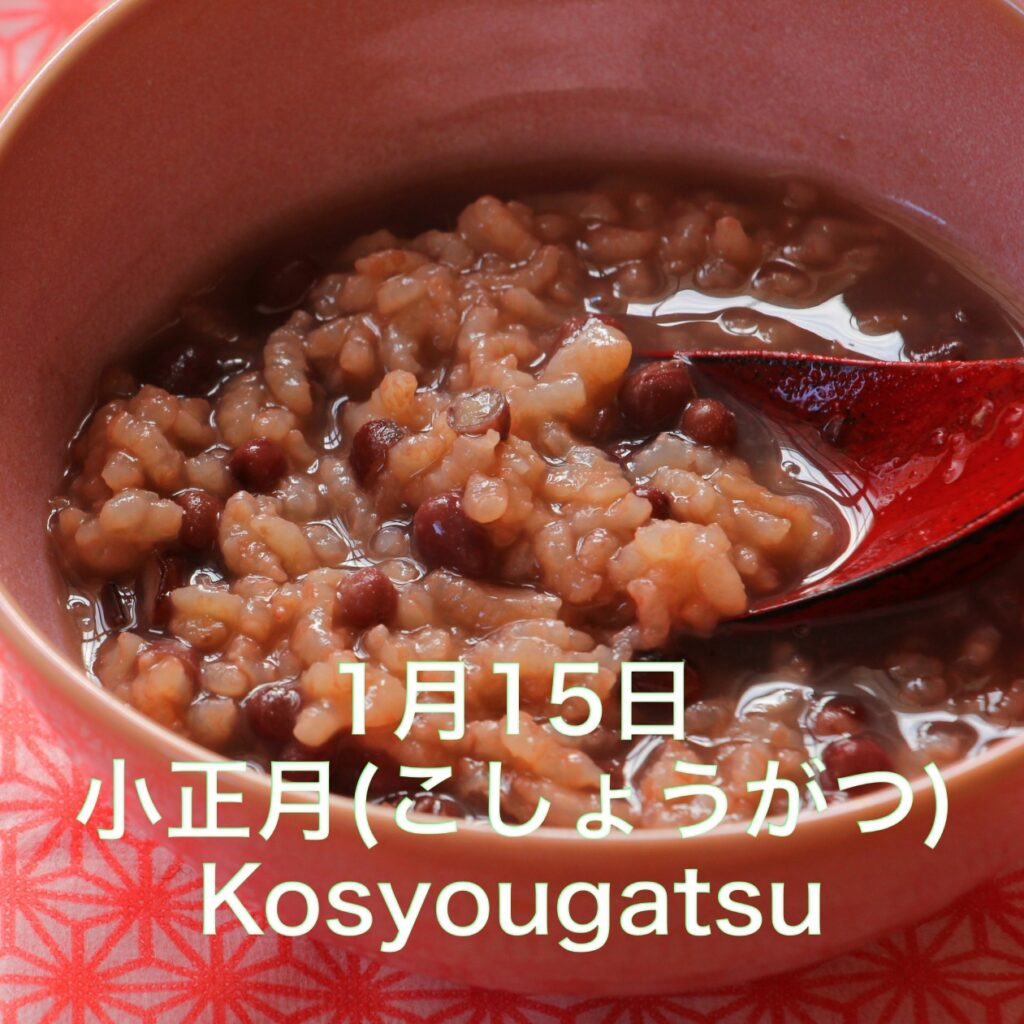
1月15日は小正月(こしょうがつ)
January 15th is Koshogatsu.
